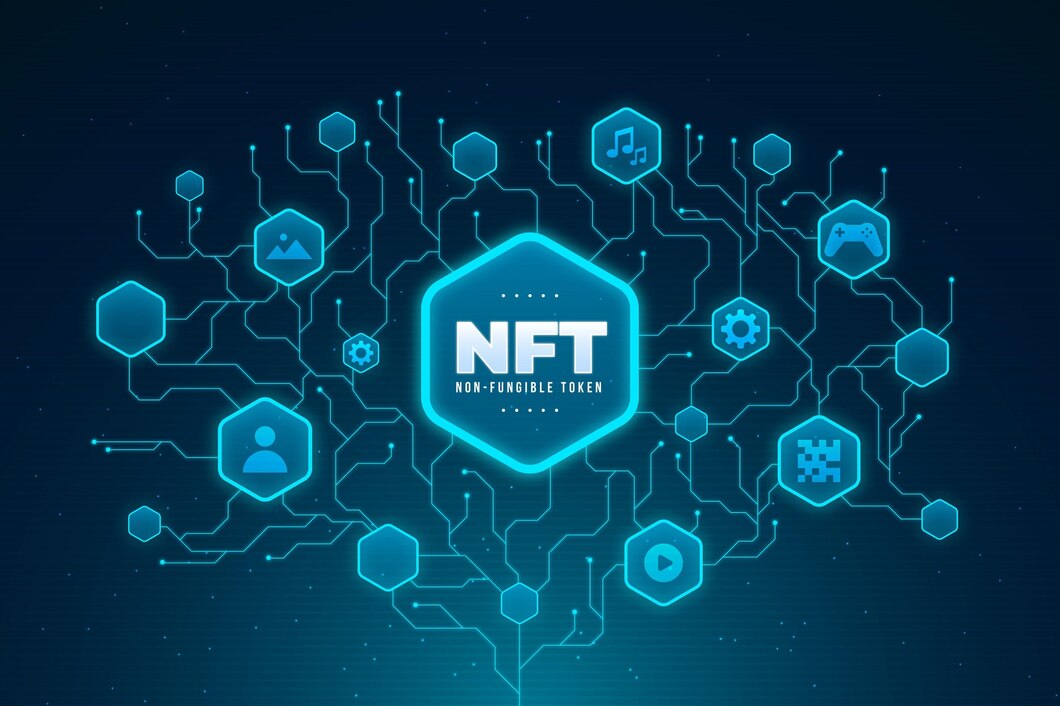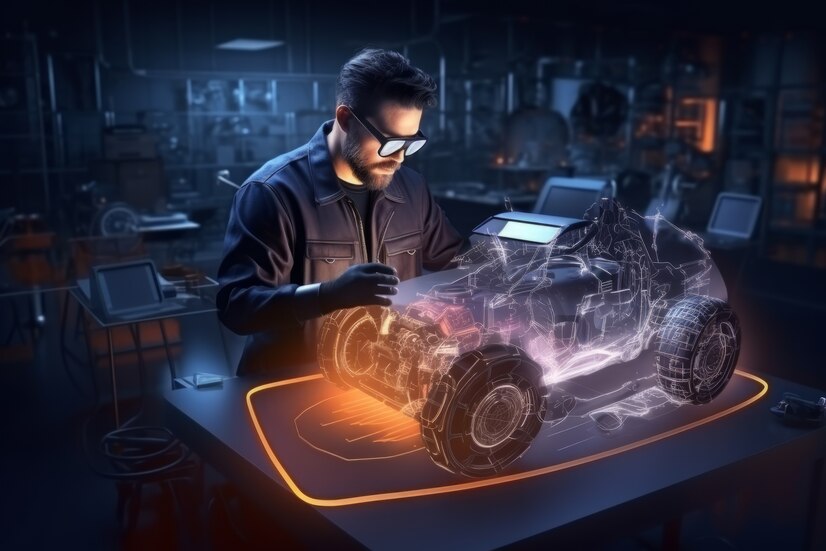General
NFT Minting Explained in Detail: A Complete Guide for Digital Artists

Understanding NFT Minting: What It Means for Creatives
Non-fungible tokens (NFTs) are the most exciting development in modern creative markets, providing a new means for creators to monetize their digital works. At its essence, minting an NFT is akin to certifying a piece of artwork as authentic and original while being recorded on the blockchain. Understanding the intricacies of NFT minting is essential in this digital era where art and technology converge. For artists, their works can be securely bought, sold, and collected in digital marketplaces worldwide. An essential tool for this process is an NFT mint tracker, which allows artists to follow their piece’s journey onto the blockchain.
As digital artists seek to harness the benefits of this burgeoning field, comprehending the nuances of minting becomes crucial. It entails not just the mere conversion of artwork into an NFT. Still, it involves a range of considerations, from understanding blockchain platforms to the intelligent contract functionalities that dictate the terms under which the art is traded. This method contrasts with traditional art transactions, often requiring a litany of intermediaries. NFT technology simplifies this significantly by establishing a direct pathway between the artist and the collector.
The Process of Minting NFTs: A Step-by-Step Walkthrough
Minting an NFT is a multifaceted process that begins long before an artist’s work becomes a part of the blockchain. The preparatory stages involve choices that can affect the reach and profitability of an artist’s work. To mint an NFT, one must determine the platform that resonates with the artist’s community and supports the artwork’s distinctive needs and specifications. Some digital marketplaces cater to various art forms, while others specialize in specific niches. Following that, the artwork in question must be ‘minted’ or uploaded and transformed into an NFT through the platform’s interface. This step necessitates an understanding of smart contracts, the self-executing contracts with the terms of the agreement between buyer and seller directly written into lines of code, and are the backbone of any NFT transaction.
Cost Considerations: Analyzing the Expenses of NFT Creation
Entering the NFT space demands an understanding of the various costs involved. Artists must be aware of ‘gas fees,’ which are necessary payments on most blockchain platforms to compensate for the computational energy required to execute transactions, and these fees can fluctuate depending on network traffic and blockchain type. Additionally, when minting NFTs, artists must consider the potential expenses of creating multiple editions of their work and how to price them strategically. Other fees aren’t tales, such as listing fees on marketplaces or fees associated with converting cryptocurrency earnings into fiat currency. Careful budgeting and financial strategy are vital to remain profitable in the NFT sphere.
Evaluating Platforms: Where to Mint Your NFTs
Digital artists have a vast selection of NFT marketplaces, each with distinct characteristics, functionalities, and communities. Some platforms pride themselves on exclusivity and the high value of assets, while others are more accessible to newcomers. Assessing factors like the platform’s reach, transaction fees, and user interface is crucial when selecting. Factors such as the robustness of the platform’s security measures, the transparency of transactions, and the accessibility for potential buyers are also critical. This analysis ensures that an artist’s choice aligns with their intent, be it maximizing visibility, profitability, or something entirely different.
Marketing Your Minted NFTs: Strategies for Visibility
The NFT marketplace is bustling and highly competitive, making effective marketing strategies more relevant than ever for artists to distinguish their work. Crafting a compelling narrative around NFT creations and connecting with an audience through social media can generate interest and engagement. Growing an online presence across different platforms, engaging with the NFT community, and leveraging influencers are tried and true ways to ensure that your NFTs are noticed. Offline ventures, such as gallery showings or collaborations, can also add to the marketing mix, blending the physical and digital worlds to capture broader interest.
Future Predictions: The Evolution of NFTs and Digital Art
The growth trajectory for NFTs and digital art is upward and outward, exploring new applications and integrations. As technologists and creatives push the boundaries, we will likely see NFTs become more deeply embedded in mainstream and subcultural scenes. Industry experts predict that advances in augmented and virtual reality will create new dimensions for NFTs, allowing for entirely new forms of interactive and immersive artworks.
Technical Deep Dive: How NFTs Work on the Blockchain
Understanding the blockchain is fundamental to grasping NFTs. The blockchain is a decentralized digital ledger that records transactions with cryptocurrencies transparently and sequentially. When an NFT is created, it is minted as a unique token on the blockchain. The underlying technology ensures each NFT has a detailed history of ownership and provenance, which is critical for validating authenticity in digital art. Another aspect of blockchain technology that adds depth to the capability of NFTs is interoperability between different blockchain platforms, which can foster innovation and utility in the application of digital tokens.
Maintaining Your NFT Portfolio: Best Practices
Managing an NFT portfolio differs from managing a traditional art portfolio. It requires strategic planning, organization, and an understanding of the marketplace. A digital wallet is a personal gallery that allows artists and collectors to showcase their NFT collections. In addition to organizing and displaying NFTs, security is paramount to protecting these digital assets from potential hacks or breaches. Thankfully, the NFT ecosystem has spawned tools and platforms that aid in portfolio management, ensuring that collections are easily tracked, traded, and appreciated.
General
Are Electric Cars or Gasoline Cars Cheaper?

In the evolving landscape of personal transportation, a key question many consumers face is whether to invest in an electric vehicle (EV) or stick with a traditional gasoline-powered car. This decision is not just about environmental impact but also involves a complex analysis of costs.
Initial Purchase Price and Incentives
When you find a new Ford for sale, it is important to remember that the upfront cost of electric cars can be higher than their gasoline counterparts, primarily due to the advanced technology and the cost of the batteries. However, this gap is narrowing as battery technology improves and production scales up. Additionally, many governments offer incentives for purchasing electric vehicles, such as tax rebates, grants, and other financial benefits, which can significantly reduce the net purchase price. It’s important to research and factor in these incentives when comparing the initial costs of EVs and gasoline vehicles.
Fuel Costs and Efficiency
One of the most significant ongoing costs of any vehicle is fuel. Electric cars offer substantial savings in this area, as the cost of electricity required to charge an EV is generally much lower than the cost of gasoline per mile. Electricity prices can vary depending on your location and the time of day when you charge your car, but on average, EVs are cheaper to “fuel” compared to traditional cars. Additionally, electric vehicles are more efficient in converting energy into power, further enhancing their cost-effectiveness regarding fuel usage.
Maintenance and Repair Expenses
Electric vehicles have fewer moving parts than gasoline vehicles, which typically results in lower maintenance and repair costs. EVs do not require oil changes, fuel filter replacements, or spark plug replacements, and they experience less wear and tear on brakes due to regenerative braking systems. However, when repairs are needed, particularly related to the battery or the electric drivetrain, they can be more expensive. The battery’s lifespan and potential replacement costs should also be considered, although many manufacturers offer extensive warranties on electric car batteries.
Depreciation and Resale Value
Depreciation is a significant factor in the overall cost of vehicle ownership. Initially, electric cars depreciated faster than gasoline cars, primarily due to the rapid pace of improvements in EV technology and concerns about battery life. However, as public acceptance increases and technology stabilizes, the depreciation rate of electric vehicles is improving. The resale value of EVs is expected to strengthen over time, especially as demand increases and more consumers look to transition from gasoline to electric vehicles.
Total Cost of Ownership Analysis
When considering the total cost of ownership, it’s crucial to factor in all expenses, including purchase price, fuel, maintenance, insurance, and depreciation. Over the lifetime of the vehicle, electric cars often become more cost-effective despite their higher initial purchase price. Various online calculators can help you compute the total cost of ownership for specific models of electric and gasoline cars, providing a clearer picture based on your personal or geographic factors.
Make the Best Choice for You
Deciding whether electric or gasoline cars are cheaper involves a comprehensive analysis of multiple factors. While electric vehicles may have a higher initial cost, their lower operating costs and potential government incentives often make them a more economical choice in the long run. As technology progresses and the adoption of electric vehicles grows, the economic benefits of EVs are likely to become even more pronounced, making them an increasingly wise investment for cost-conscious consumers.
General
The Impact of Aerodynamics on Your Car’s Performance

Aerodynamics plays a significant role in the design and performance of modern vehicles, influencing everything from fuel efficiency to high-speed stability. Understanding how aerodynamics affect your car’s performance can provide valuable insights into why certain design decisions are made by automakers and how they impact the everyday driving experience.
What is Aerodynamics?
Aerodynamics refers to the way air moves around objects. For cars, aerodynamics is about managing the airflow around the vehicle to minimize resistance or drag and maximize efficiency and performance. The basic principle behind automotive aerodynamics is simple: the smoother the air flows over the body of the car, the less energy the car will use to move forward and the more stable it will be at higher speeds.
Fuel Efficiency
One of the most significant impacts of improved aerodynamics is better fuel efficiency. By reducing drag, a vehicle can move more efficiently, requiring less power and thus using less fuel. Cars with better aerodynamics tend to have a sleek design, with features like covered underbodies and streamlined shapes, which you may see in higher-end cars, like a new BMW for sale. These design elements help to reduce air resistance and turbulence, enabling the vehicle to slice through the air more easily.
High-Speed Stability
Aerodynamics also plays an important role in a car’s stability at high speeds. Cars designed with aerodynamic efficiency in mind usually feature spoilers and diffusers that manage airflow to reduce lift and increase downforce. This higher downforce helps keep the vehicle firmly planted on the road, providing better traction and handling during high-speed maneuvers. This is why sports cars often have pronounced aerodynamic features like large rear wings and low, wide stances.
Handling and Performance
The handling and overall performance of a car are also influenced by its aerodynamic design. Aerodynamic cars tend to have less body roll and better grip, especially in windy conditions or when making sharp turns. This is because of the reduction of crosswind impact and the overall balance of airflow at all angles around the vehicle. Consequently, drivers of aerodynamically efficient cars can enjoy a smoother and more controlled driving experience.
Noise Reduction
Another less obvious benefit of good aerodynamics is noise reduction. Cars with better aerodynamics generate less wind noise, which is the noise created by air moving around and inside the vehicle. This noise reduction makes for a quieter ride and can lessen driver fatigue on long trips and improve the overall comfort level inside the cabin.
Innovations in Aerodynamic Design
Automotive engineers continually innovate to improve vehicle aerodynamics. Recent advancements include active aerodynamics, where parts of the car adjust dynamically to suit different driving conditions. For instance, some sports cars feature adaptive rear wings that can alter their angle to optimize downforce or reduce drag as needed. Electric vehicles, which benefit significantly from reduced drag due to their need for efficient energy use, often feature particularly smooth and streamlined designs.
The Overall Impact of Aerodynamics
The impact of aerodynamics on car performance extends beyond making a vehicle faster or more fuel-efficient. It affects safety, comfort and environmental responsibility, making it an important component of modern automotive design.
General
Exploring the Wonders of MyFavouritePlaces.org// blog: A Blogger’s Dream

Introducing MyFavouritePlaces.org
Creating and sharing your travelogues has never been easier than with MyFavouritePlaces.org, an all-inclusive platform for travel blogging. You may enrich your travel blogging trip with the plethora of tools offered by this platform, from making visually beautiful blogs to participating with a community of fellow travellers. Now we’ll explore the reasons why MyFavouritePlaces.org is so popular among travel bloggers.
Discovering the Features
User-Friendly Interface
The clean, simple design of the interface is one of the most noticeable aspects of MyFavouritePlaces.org. You won’t have any trouble finding your way about the site, regardless of your level of blogging experience. The interface is well-organized and minimalist, so you can put your focus where it belongs: on making captivating content and sharing your trip tales.
Personalized Travel Recommendations
There’s more to MyFavouritePlaces.org than meets the eye. Based on your interests and past posts, it suggests tailored vacation spots. Your vacation planning will be more effective and personalized with this function since it keeps you informed about interesting new places that fit your preferences.
Interactive Travel Maps
Envision a map that highlights your past and future travel destinations. You can incorporate the interactive trip maps provided by MyFavouritePlaces.org into your blog articles. Maps like this not only make your writing more visually appealing, but they also make it easier for readers to follow your journey geographically.
Community Engagement
The core of MyFavouritePlaces.org is the community. The platform’s comment section, forum, and social network integration make it easy for bloggers and readers to engage with each other. Your blog’s exposure and trustworthiness will both increase as a result of your community engagement efforts.
Creating Your Travel Blog
Easy Blog Setup
The MyFavouritePlaces.org blog platform makes blog creation a snap. Following the detailed instructions will have your blog live in no time. You may tell compelling travel stories and connect with your audience without worrying about the technical parts because the platform takes care of them.
Customizable Themes
The aesthetics of your blog serve as an important first impression. Many alternative themes are available for customization on MyFavouritePlaces.org. You may pick a theme that represents you and your brand, whether that’s a clean, simple style or a bold, eye-catching layout.
SEO Tools for Bloggers
The success of a blog hinges on its visibility. Search engine optimization (SEO) tools are already installed on MyFavouritePlaces.org, so you can easily make your material search engine friendly. Using these tools, which include keyword suggestions and meta descriptions, you may boost your blog’s search engine rankings and attract more visitors.
Social Media Integration
To promote your blog in this digital era, social media is a potent instrument. Sharing your posts on MyFavouritePlaces.org is a breeze thanks to the site’s tight integration with all the main social media sites. You can engage more people across more platforms with this tool, which expands your audience reach.
Exploring Destinations
In-Depth Destination Guides
Here at MyFavouritePlaces.org, we have extensive destination guides that cover a wide range of sites all around the globe. The wealth of information included in these guides—on local culture, must-see destinations, travel advice, and more—makes them a must-have for bloggers and readers alike.
User-Generated Content
Content created by users is the platform’s bread and butter. Being a blogger allows you to both help other people and gain knowledge from the experiences of others through the sharing of guides, reviews, and recommendations. This pool of information enhances the site’s content and gives users a variety of viewpoints on various travel places.
Virtual Tours and Experiences
Virtual tours and experiences are available on MyFavouritePlaces.org for individuals who are unable to travel but yet wish to see the world. You may virtually visit different places and experience a little bit of what they have to offer with these engaging features. It’s a fantastic method for collecting material and ideas for future adventures.
Top Destinations Highlight
On a monthly basis, MyFavouritePlaces.org features curated lists of the best vacation spots. These highlights provide you new options for your next vacation by showcasing popular and lesser-known destinations. There is something on these lists for everyone, whether they are seeking well-known tourist spots or more obscure adventures.
Building Your Audience
Networking with Other Travelers
When it comes to blogging, networking is key. Through its forums, group projects, and gatherings, MyFavouritePlaces.org makes it easy for travel enthusiasts to interact with one another. Connecting with people who share your values can open doors to new experiences and help you both develop personally and professionally.
Monetization Opportunities
The ability to monetize your blog is a huge plus. Advertisements, sponsored posts, and affiliate marketing are just a few of the ways that MyFavouritePlaces.org can make money. With these chances, you may make money doing what you love while also providing your audience with great content.
Analytics and Growth Tracking
If you want your blog to grow, you must understand how it is performing. You may monitor the demographics, interaction, and traffic to your blog with the help of MyFavouritePlaces.org’s comprehensive analytics. Your strategy, content, and reach may all be fine-tuned with the help of these insights.
Conclusion
Why Choose MyFavouritePlaces.org?
A user-centric and adaptable platform for travel bloggers, MyFavouritePlaces.org stands out in a congested digital world. If you want to tell the world about your travels, this is the app for you because of its powerful features, user-friendliness, and community support. No matter how much or how little experience you have with blogging, you will find what you need at MyFavouritePlaces.org.
Final Thoughts
Inspiring people, sharing knowledge, and creating a community are the true goals of travel blogging, which goes beyond simply documenting your experiences. MyFavouritePlaces.org improves upon it by offering a full-featured platform for all your blogging requirements. The process is made easier and your influence is maximized, whether you’re writing compelling material or connecting with fellow travelers.
-

 Health2 weeks ago
Health2 weeks agoHealthcare management consulting: Navigating the complexities of an evolving sector
-

 Home Improvement2 weeks ago
Home Improvement2 weeks agoHow to Maintain Your Residential Heating System for Optimal Performance
-

 Home Improvement2 weeks ago
Home Improvement2 weeks agoMaximizing Home Comfort and Efficiency with Innovative Floor Vent Designs
-

 Home Improvement1 week ago
Home Improvement1 week agoEnhancing Home Comfort with Residential Screen Doors: Benefits and Selection Tips
-

 Health1 week ago
Health1 week ago6 Ways Cupping Therapy is Enhancing Wellness in Geneva
-

 General2 days ago
General2 days agoAre Electric Cars or Gasoline Cars Cheaper?
